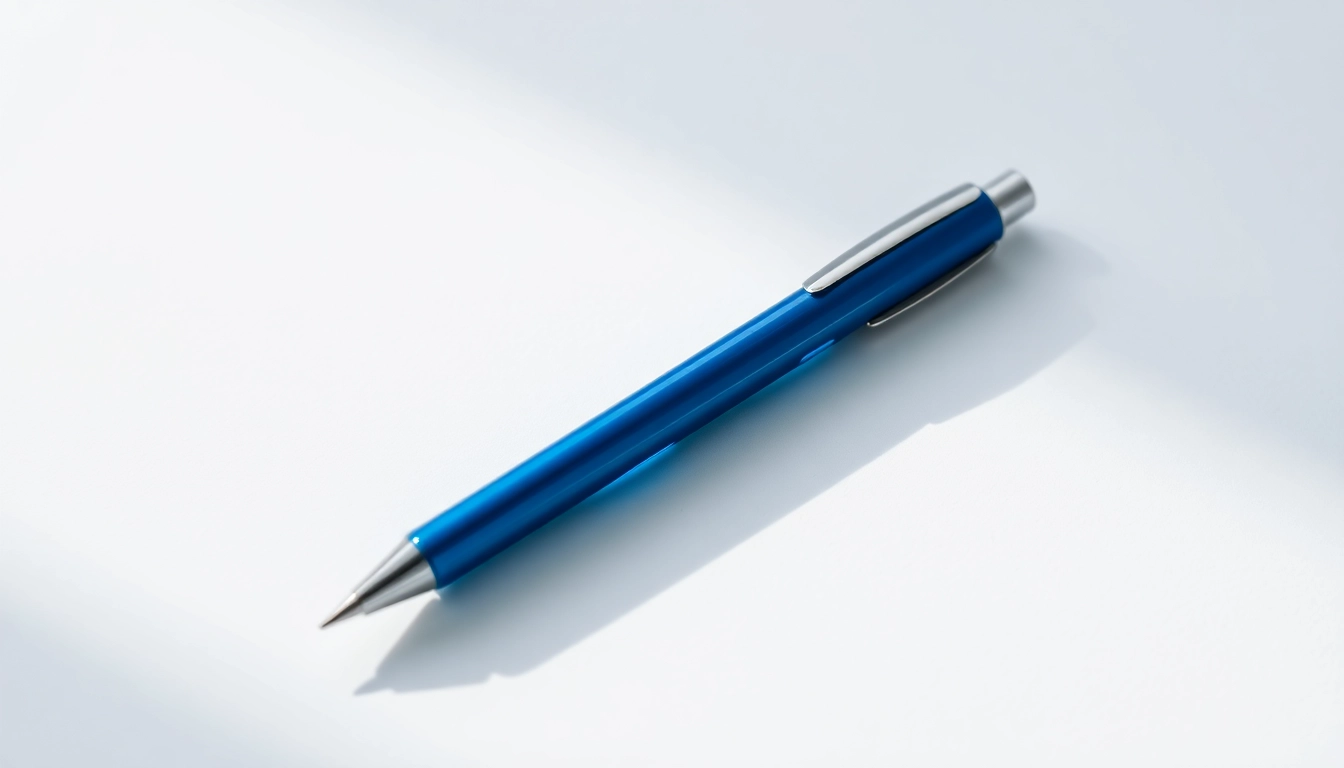Understanding the Purpose of Blue Handwriting Pens
Blue handwriting pens are not merely a tool for writing; they are an embodiment of clarity, professionalism, and artistry. The significance of utilizing a blue handwriting pen extends beyond its ink color, encompassing psychological, emotional, and functional aspects that have been researched extensively in various writing contexts.
Importance of Color in Handwriting
The color of ink used in writing plays a pivotal role not only in aesthetics but also in readability and comprehension. Blue ink, for instance, is often considered more legible than black ink under certain lighting conditions, which can enhance readability. Studies have shown that blue text tends to be perceived as more engaging, lowering anxiety levels among both writers and readers. The psychological impact of color can influence how content is received, therefore making blue an ideal choice for letters, reports, and even in educational settings.
Benefits of Using a Blue Handwriting Pen
Using a blue handwriting pen offers a range of benefits. Firstly, blue ink has a unique tendency to stand out on paper, enhancing the readability of text. This attribute is particularly beneficial in academic or business contexts where clarity is paramount. The blue color can also inspire creativity and stimulate mental engagement. Not to mention, from a practical viewpoint, blue ink is less likely to show errors compared to black ink, allowing for a cleaner and more professional appearance of handwritten documents.
Ideal Scenarios for Blue Ink Usage
There are various scenarios in which the use of blue handwriting pens is particularly advantageous. In educational settings, teachers often prefer blue ink for grading and comments as it is distinct from typical text color, making it easier for students to identify feedback. Blue ink is likewise popular in professional settings—signatures, official documents, and correspondence all benefit from the positive perception associated with blue. Additionally, creative tasks such as journaling or note-taking can be more enjoyable with a blue pen, as it adds a personal touch that black ink cannot replicate.
Features to Look for in a Blue Handwriting Pen
Selecting the right blue handwriting pen is crucial to maximizing your writing experience. Here are key features to consider when making your choice:
Nib Types and Their Impact on Your Writing
The nib type can substantially alter your writing experience. Options typically include fine, medium, and broad nibs. Fine nibs allow for precise, controlled writing, ideal for detailed work such as annotations or note-taking. On the other hand, medium or broad nibs offer a smoother flow of ink, creating bolder lines that can enhance legibility and provide a more pleasant writing experience for longer documents. The choice of nib is directly correlated with one’s writing style and purpose, so understanding these variations is key to making an informed decision.
Ink Quality: What Makes a Difference?
The quality of ink in a handwriting pen can significantly influence performance. High-quality ink should flow smoothly, dry quickly to prevent smudging, and resist fading over time. Look for pens that use archival ink formulations if longevity is important, especially for documents that need to be preserved. Some pens may utilize gel or hybrid ink to offer the best of both worlds: the smoothness of ink flow combined with the advantages of quick drying time.
Grip Design and Comfort Levels
The grip of a pen can have a huge impact on your comfort as you write. Ergonomic designs can prevent strain and fatigue, especially if you plan on writing for extended periods. Consider factors such as grip thickness, material, and shape—these elements can enhance control and comfort, thus improving overall writing performance. A comfortable pen can also make a significant difference in handwriting neatness and speed, directly affecting productivity.
Comparing Popular Brands of Blue Handwriting Pens
With various brands on the market, each offering unique features, understanding the spectrum can help you find the ideal writing tool. Here’s a closer look at some popular brands:
Taking a Closer Look at Berol vs. Manuscript
Berol pens are favored for their smooth, effortless writing experience. They generally feature durable nibs that excel in educational settings, catering to all types of writers, especially students. On the other hand, Manuscript pens are known for their broad range of handwriting tools, including products tailored for both classroom use and artistic applications. Manuscript favors quality with ink that dries quickly, making it suitable for left-handed users who frequently deal with smudging problems. A comparison between Berol and Manuscript reveals preferences based largely on specific needs, whether precision, design comfort, or ink quality is prioritized.
Why STAEDTLER Stands Out in the Market
STAEDTLER is renowned for its high-quality educational art supplies, including blue handwriting pens that incorporate advanced technology in their designs, such as dry-safe inks that prevent drying out when caps are left off. Their ergonomic designs also target diverse user groups, ensuring that comfort does not compromise the quality of writing. STAEDTLER combines innovation with practical application, making it a go-to choice among teachers and students alike.
Emerging Brands Worth Noticing
Beyond established names, numerous emerging brands are gaining traction for their unique approaches to handwriting pens. Brands such as Nexus offer triangular grip designs that are particularly beneficial for younger writers or those learning how to hold a pen. Innovations within these new companies can lead to exciting advancements in pen technology, and they often focus on sustainability, appealing to eco-conscious consumers.
How to Properly Maintain Your Blue Handwriting Pen
To ensure the longevity and performance of your blue handwriting pen, proper maintenance is essential. Here are some best practices:
Cleaning and Refilling: Best Practices
Cleaning your pen regularly can prevent clogging and maintain optimal ink flow. For cartridge-based pens, it is prudent to replace cartridges as soon as they run out to prevent sediment from hardening within the mechanism. For refillable models, keeping the nib clean with a damp cloth after each use can significantly prolong the life of your pen.
Common Issues and How to Fix Them
Some common issues with blue handwriting pens include skipping or blotting. If your pen skips, this could indicate dried ink at the nib; gently cleaning it with a wetted cotton swab can restore functionality. Blotting is often a result of excessive pressure, so revisiting your grip and technique may be necessary. Understanding how to troubleshoot these minor problems can save you time and improve your writing experience.
Storage Tips for Longevity
Proper storage of your blue handwriting pen is critical to avoid ink drying up. Pens should be stored horizontally if they are felt-tip or gel pens to ensure even ink distribution. For ballpoint pens, storing them vertically with the nib facing down can prevent air from entering and drying out the ink. Keeping pens in a controlled environment, away from extreme temperatures and moisture, can also aid in extending their lifespan.
Real User Experiences with Blue Handwriting Pens
To provide a holistic view of blue handwriting pens, it’s imperative to consider firsthand experiences from users in various fields.
Feedback from Students and Professionals
Students often report a preference for blue handwriting pens over black due to its visually stimulating aspects. This color tends to help in distinguishing notes and key points during lectures. In contrast, professionals express satisfaction with gel and ink pens, praising their fluidity and lack of smearing. Feedback consistently highlights the importance of pen weight and grip comfort as crucial elements influencing the overall experience in extensive writing situations.
Top Tips for Choosing the Right Pen for Your Needs
When selecting a blue handwriting pen, users recommend assessing one’s unique writing style and intended usage. Trying out different nibs and grips to find the most comfortable option can significantly enhance writing performance. As well, considering ink type—whether gel, rollerball, or fountain—will dramatically influence how the pen feels in hand and how it performs on paper.
How Personal Preference Influences Choices
Everybody has their own unique preferences when it comes to pens; thus, personal taste heavily factors into the decision-making process. For some, the aesthetics of the pen might play a considerable role, while for others, functionality is paramount. Engaging in trial and error through different brands and styles can help users find that perfect fit that meets both their aesthetic and functional needs.



